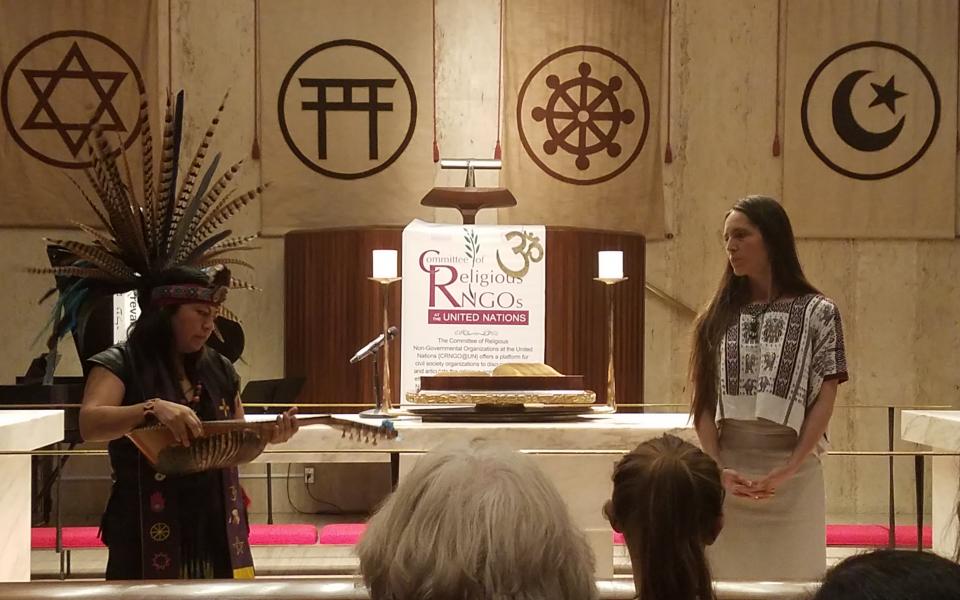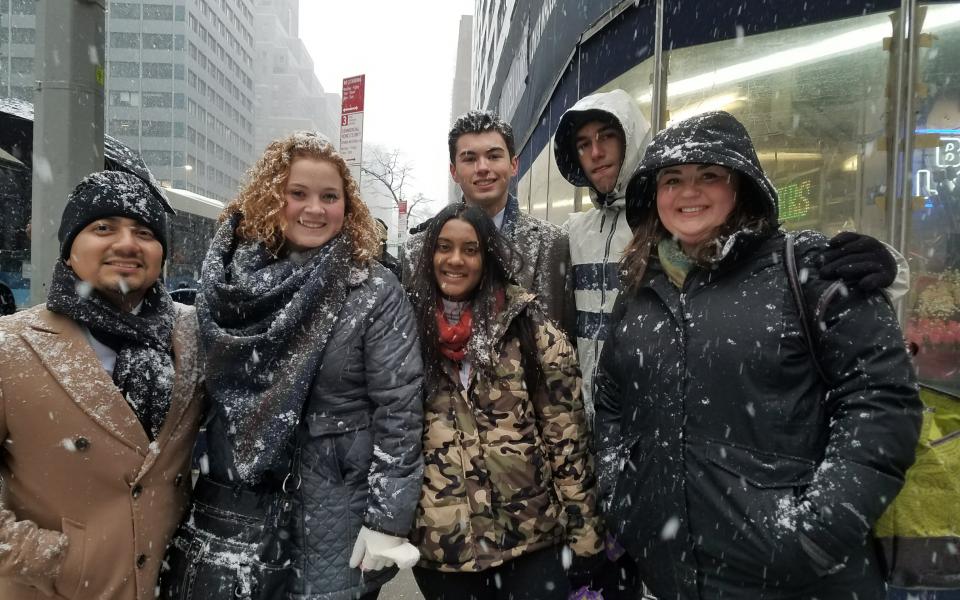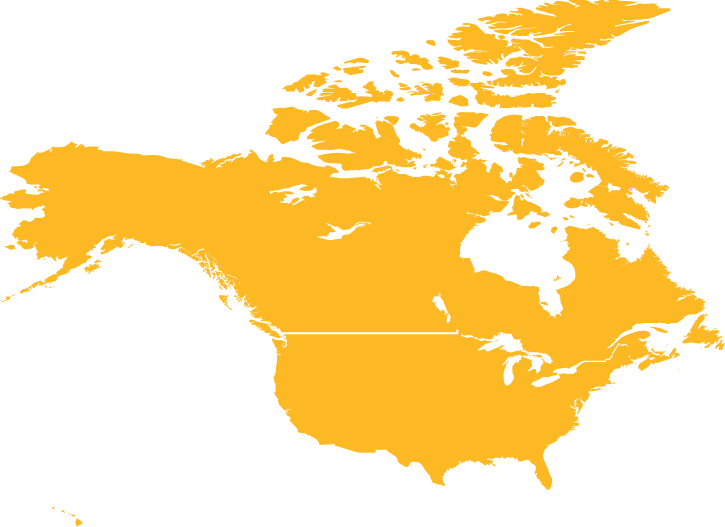Ellie Anders Thompson traveled to the United Nations as part of a URI program to connect young adult interfaith leaders to the UN and each other. Ellie is part of Golden Rule Project, an Affiliate of the United Religions Initiative North America. What follows is Ellie's reflection on an interfaith service the group attended.

By Ellie Anders Thompson
The gathering of the Committee of Religious NGOs at the United Nations celebration of World Interfaith Harmony Week was what I affectionately call a Prayer Parade. It goes like this, group of people from various religious traditions, sometimes non-religious, are asked to offer a prayer. At times the prayers are around certain themes, sometimes not, this time, around “world peace.” One after another folks of various faiths come to the microphone and say different versions in different languages of, “May Peace Prevail on Earth.”
In my humble opinion, it’s just not enough in interfaith work any longer. It is colorful, shiny, and curious, but it’s just not going to cut it when it comes to the challenges we are facing. We know the greatest sources of social capital come from these religious and non-religious communities, and they, therefore, have the greatest potential to actually do something to create the potential for peace. I am not sure gathering in a room with different headdresses and sing-alongs are the actions that will have long-term effects toward peace.
Before I get much further along in the specific experience of the gathering, I should probably explain to the reader the kind of action-oriented person I am. The whole “faith without works” verse in book of James in the Bible (“What good is it, my brothers, if someone says he has faith but does not have works? Can that faith save him?”) is quite descriptive of my personality. I am the girl in the small group always asking, “so, now we’ve learned this cool thing, what do we do?” It’s great you’ve discovered some new facet of God’s love for you; how are you going to give that love away to the others around you?
Back to the Tillman Chapel across the street from the United Nations, where this service took place. First in the parade, a couple of diplomatic types, one whose country I know recently closed their borders to Syrian refugees, talking about a common good and universal love, respect, the type of language you’d expect to hear at such an occasion. This ambassador person may have very little to absolutely no control over their borders, so admittedly they might genuinely feel the words they were speaking, but how much more powerful would it had been for them to acknowledge their country's failings? Some version of how much work even they have to do… Sadly, none of this honesty.

Ellie (far right) with the other trip participants.
After the full program of prayer after prayer, song, and dance to “shake things up a bit”, a thinly veiled admission even they know their program is too long and monotonous, what ultimately was accomplished? Did everyone come away with some sense that “we aren’t all that different after all”? Certainly not, they were quite certain of this before they stepped foot through the door. Was this an educational opportunity for those in the audience to come to a deeper appreciative knowledge of how these folks practice their faith, or the meaningfulness of their tradition within their life story? Certainly not, as this would have gone on for twice the number of hours, if not longer.
Admittedly, I come from a place which puts on one of these Prayer Parades every year. I sit on the board of the Salt Lake Interfaith Roundtable which has for many years put on some version of what they call a “Sacred Music Evening.” And the question of “what is accomplished?” stands. Well, the high school students around were quite taken with the event at the Tillman Chapel. They had never seen such diversity in a single room. (As many people who attend the Sacred Music Evening Salt Lake City in the Mormon Tabernacle are genuinely fascinated by the spectacle.) Even I heard the prayers from religions of which I’ve only read about in textbooks, so there was something to be said about the array of colorful people, practices, and personalities in the room. And, so…. so what? What would be the difference had there been some sort of engagement with the material? If folks had been allowed to ask questions about the individual practices? Of course then organizers would need to limit the amount of participation. What if not only those prayers of commonality had been on display, but also the difference in belief had been acknowledged?
This is our challenge in the interfaith movement. So long and hard have the established organizations preached to the choir: they are blind to the differences, minimize meaningful differences, or outright deny differences, which in turn, exclude the very folks of orthodoxy or of a conservative persuasion --the folks they wish would come to their programs to see the diversity, and open their hearts and minds. This type of program though, is inherently unattractive and exclusionary toward their perspective and therefore participation.
What else could have been more engaging? There could have been some sort of service element to the program. We could have taken to heart the often quoted Gandhi “Be the change, you wish to see in the world.” What would it look like to do peace in a setting like this? Dialoguing between the groups to demonstrate common values, common efforts to do tangible work towards peace, and then share with the audience those common scriptures which call the adherents to peaceful relations across lines of religious difference.
We need more practical efforts towards the problems we face. The younger generations have already begun to come against the common response that comes after one sort of disaster or another -- “Our thoughts and prayers are with you.” What do the hands and feet of those thoughts and prayers look like lived out across religious and secular affiliations? When we begin to parade the service opportunities for folks who feel disconnected because they no longer identify with an established religion, maybe those folks who are completely disenfranchised with religion will see those of faith differently. Service to the community helps the religious speak about the benefits of social capital within religious affiliations and social good established through interfaith organizations.
We also desperately need examples of friends who bear with one another through thick disagreement. By putting them on display and modeling practices of deep disagreement real people of authenticity display the power to remain in friendship which is what we all truly need to see. The screeching disagreement on Twitter, Facebook, and cable news can no longer be the voices we amplify. But also not the folks preaching we are really all the same, because it is clearly a story full of inconsistency and holes which no Parade of Prayer is ever going to fill.
Maybe this ceremony in the Tillman Chapel was an opportunity for refreshing or renewing for folks who worked in the UN ‘trenches’ every day? As those who are here to take part, share your work with us. Let us share some of that burden, and take off the colorful facade. Let us then find ways to meaningfully display our diversity through finding our shared values which bring us to working toward making practical changes and, when those disagreements around our religious identities do rise to the surface, let us not shy away but lean in to learn more about one another. When we are fully known and fully loved, in that place peace may actually prevail on Earth.
Follow these links to read reflections from trip participants Rico, Hassan and Anjaana
